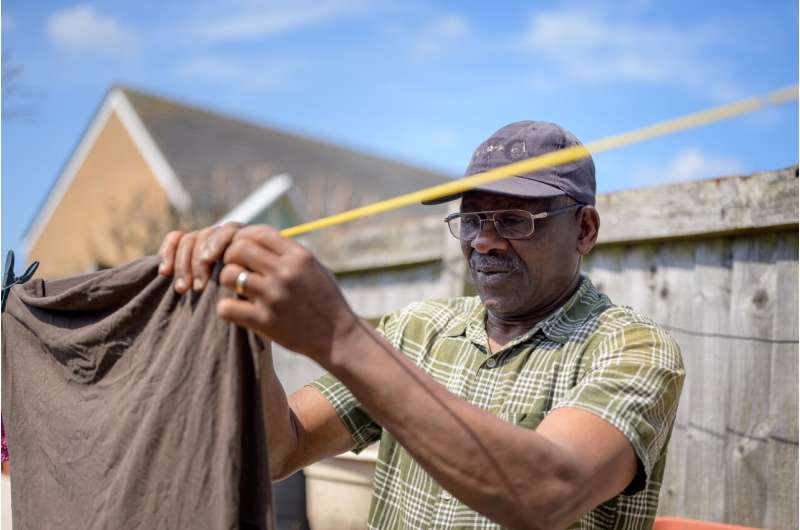How to Recognize and Respond to Heat Exhaustion and Heat Stroke

Learn how to identify the symptoms of heat exhaustion and heat stroke, and discover essential tips for prevention and emergency response during extreme heat conditions.
As a persistent heat dome traps scorching air and humidity across the Eastern United States, millions face life-threatening conditions due to extreme heat. The National Weather Service has issued heat advisories and warnings, with daytime temperatures soaring into the 90s and even triple digits in some areas, increasing risks especially for vulnerable populations such as the elderly, outdoor workers, and individuals without air conditioning.
Understanding the signs of heat-related illnesses is crucial. Heat cramps are often the earliest indicator, characterized by painful muscle contractions caused by fluid and electrolyte loss. If these are ignored, the condition can escalate to heat exhaustion, where individuals remain alert but sweat excessively, experience a rapid heartbeat, and may have low blood pressure.
Heat stroke is the most severe form of heat illness. It occurs when the body's mechanisms for dissipating heat fail, leading to a rapid rise in internal temperature—often exceeding 104°F (40°C). Classic signs include cessation of sweating with dry skin, confusion, hallucinations, and altered mental status. Heart rates become dangerously high, blood pressure drops, and vital organs can suffer multisystem failure, potentially resulting in death if not promptly treated.
Hydration with water is vital, but alone it isn't enough to prevent heat illness. Proper hydration includes replenishing electrolytes lost through sweat, which is essential for maintaining bodily functions. During heat stroke, the body's temperature regulation is disrupted—your internal 'thermostat' resets at a higher temperature, and immediate cooling methods such as ice baths or chilled IV fluids are critical.
High humidity exacerbates heat risks by impeding the body's ability to cool through sweating, while wind can aid cooling. Recognizing that vulnerable groups like babies, young children, and the elderly are at higher risk due to less effective sweating and thermoregulation is essential for preventing heat-related health issues.
To prevent heat illness, individuals should follow tips like drinking water regularly (every 15-20 minutes), using sports drinks with electrolytes during strenuous activity, and checking urine color for dehydration signs. Cooling the body with cold water on pulse points—the neck, armpits, groin, and head—can provide rapid relief.
When planning outdoor activities, especially during high temperatures and humidity, consider adjusting schedules, limiting exertion, and ensuring proper hydration and rest breaks. Protective measures like wearing hats, lightweight clothing, and applying sunscreen are also recommended. For events like sports practices or outdoor work, moving activities indoors or to shaded areas and using fans or misters can significantly reduce heat exposure.
Awareness and prompt action are key to avoiding severe heat-related illnesses. Recognizing early symptoms and taking immediate cooling and rehydration steps can save lives.
_source: https://medicalxpress.com/news/2025-06-victim-exhaustion.html
Stay Updated with Mia's Feed
Get the latest health & wellness insights delivered straight to your inbox.
Related Articles
Older Veterans Increasingly Use Cannabis for Pain Relief, Mood Enhancement, and Sleep Improvement
A new study reveals that over 10% of older veterans are using cannabis monthly, with a significant risk of cannabis use disorder, highlighting the need for routine screening and targeted interventions in this population.
Court Mandates Continuation of Hormone Therapy for Transgender Inmates
A federal court has ruled that transgender inmates must continue receiving hormone therapy and gender-affirming care, challenging restrictions imposed by previous policies. The decision emphasizes inmates’ health rights and the importance of ongoing medical treatment for gender dysphoria.
The Importance of Donor Milk Storage Time for Preemie Gut Health
New research highlights the critical impact of donor milk storage time on the gastrointestinal health of premature infants, emphasizing the need for fresher milk to reduce risks like necrotizing enterocolitis.
Green-Mediterranean Diet Linked to Slowing Brain Aging
A green-Mediterranean diet including green tea and Mankai may help slow down brain aging, potentially preserving cognitive health over time. Learn about this groundbreaking study and its implications for healthy aging.



